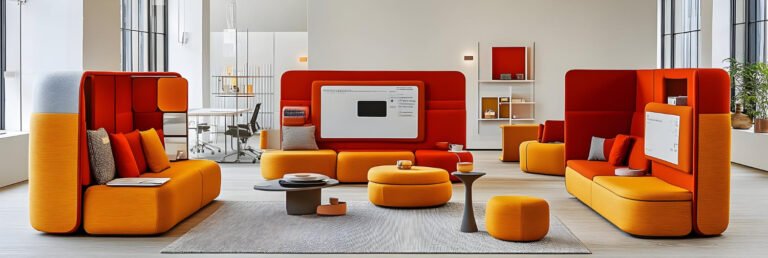
Flow & Functionality: How To Arrange Furniture That Works With Your Space
Ever felt like a room just works—as if everything falls into place without you even noticing? That’s the beauty of flow. And it’s no accident.
In home design, flow and functionality are more than buzzwords. Flow refers to how easily you can move around a space, while functionality is about how well that space serves your daily life. Together, they form the foundation of comfort, style, and usability.
This blog will walk you through practical, intuitive ways on how to arrange furniture that complements, not competes with, your space. Whether you’re starting from scratch or reworking what you already have, these furniture placement tips will help you create a room that feels right.
Furniture Arrangement: Start With the Room’s Purpose
Before you move a single chair, ask yourself: what is this room meant for? Is it a space for quiet reading? Socialising with friends? Working from home? Or maybe all three? Every room should have a clear purpose—and that purpose should guide your layout.
Some examples include: a living room that prioritises conversation might place seating around a central coffee table. Or, a multifunctional space may need distinct zones for dining, lounging, and working.
Zoning is key. Use rugs, lighting, or bookcases to subtly divide areas without closing them off.
Anchor the Space with the Right Furniture
Every great layout starts with an anchor—the piece of furniture that defines the space. In most living room furniture arrangements, this anchor is the sofa.
Here’s how to think about it,
- In a small room, an L-shaped sofa tucked in a corner maximises seating and opens up floor space.
- In open layouts, floating a sofa in the middle of the room can help define zones while keeping the room open and airy.
Once the anchor is set, build around it,
- Add side chairs to complement the flow.
- Place tables within arm’s reach for functionality.
- Always allow space for movement between pieces.
This approach keeps your room from feeling chaotic and gives structure to your design.
Let the Room Breathe: The Art of Negative Space
A common mistake when thinking about how to arrange furniture is trying to fit too much into the room. But space—empty space—is part of the design.
Negative space is what allows your furniture to breathe and your room to feel open rather than cluttered.
Keep in mind,
- Leave at least 2.5 to 3 feet of walkway around major furniture pieces.
- Don’t push everything against the wall—sometimes a bit of “float” improves flow.
- Keep lines of sight open between areas.
This breathing room brings clarity and calm to your space.
Balance and Proportion: Not Too Big, Not Too Small
A well-designed room balances scale—that is, the relationship between the sizes of objects.
- A large sectional needs a coffee table with enough presence to feel grounded.
- A compact chair next to a massive sideboard will feel out of sync.
Aim for visual balance, not just symmetry,
- Place tall pieces next to lower ones to avoid monotony.
- Layer soft textures with solid surfaces for warmth and structure.
Symmetry creates a calm, classic look. Asymmetry can feel dynamic and modern. Choose what suits your style—but always keep proportions in mind.
Layout Variations: Classic vs. Contemporary
There’s no one-size-fits-all layout. The way you place furniture should complement your design style.
Classic Layouts,
- Symmetrical setups.
- Formal seating arrangements.
- Matching pieces and clear zones.
Contemporary Layouts,
- Floating furniture.
- Modular pieces that shift as needed.
- Mixed materials and relaxed, flexible flow.
For example, a curved sofa with a gallery wall behind it feels elegant and curated, while a minimalist setup with low-profile furniture and open sightlines feels more fluid and urban.
Smart Furniture Placement for Multifunctional Spaces
Modern living demands flexibility. Your dining room might double as a workspace. Your living room might host yoga in the morning and movie nights at dusk.
Here are smart ways to make the most of multifunctional rooms,
- Choose modular furniture that can be rearranged.
- Opt for dual-purpose pieces: ottomans with hidden storage, console tables that serve as desks.
- Use foldable or stackable chairs for temporary needs.
It’s about making your room work for you—without sacrificing style or comfort.
Conclusion
A well-arranged room does more than look good—it works with your life, your movement, and your mindset. The best spaces feel intuitive because they’re rooted in flow and functionality.
Whether you’re working with a compact apartment or a spacious villa, thoughtful furniture placement tips can transform any space into something that supports your lifestyle.
Take your time. Move pieces around. Experiment. And when you’re ready to elevate your space, explore how Mercure Crafts International’s well-crafted pieces can turn even the smallest layout into a seamless experience of comfort and style.



